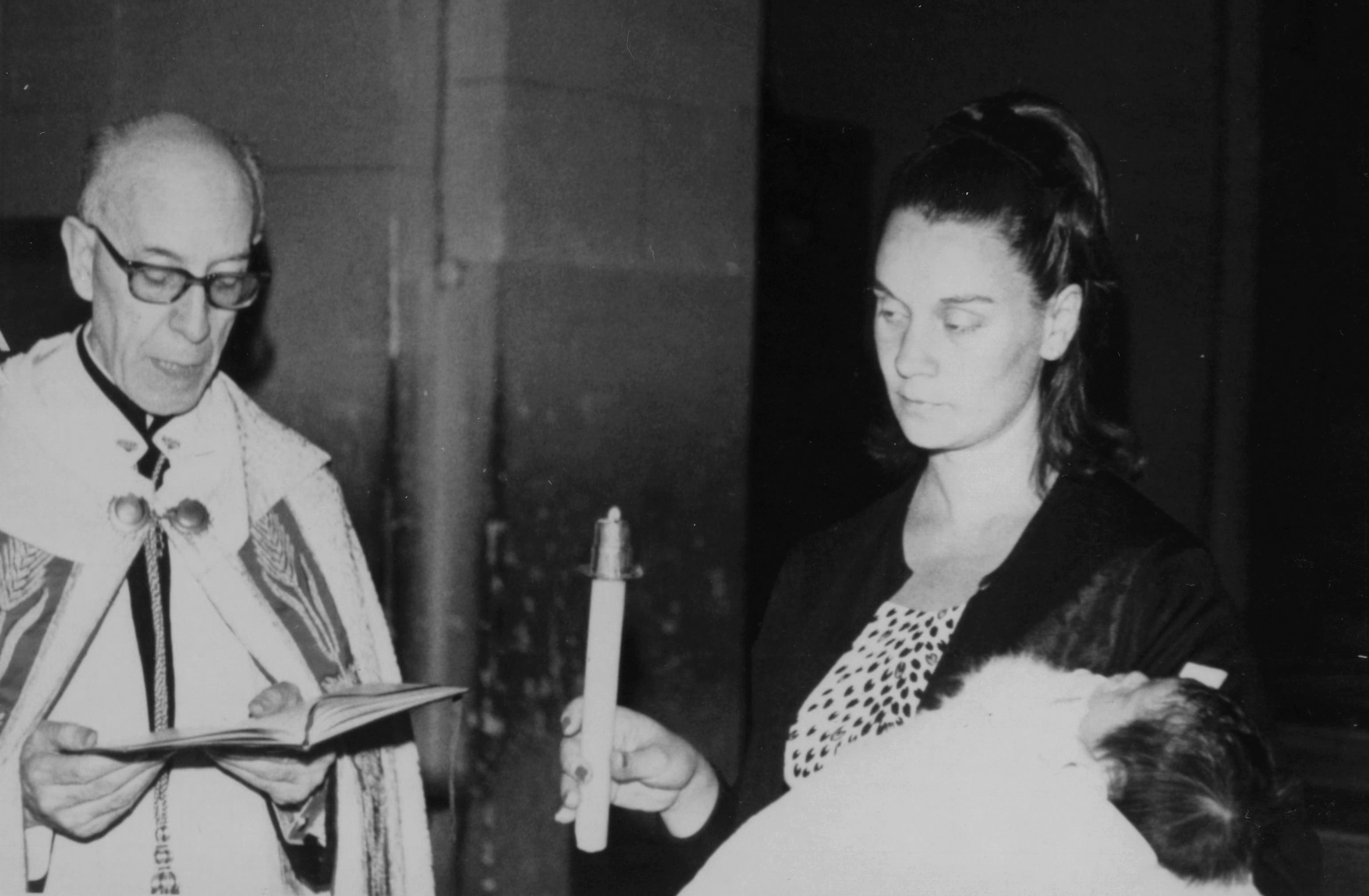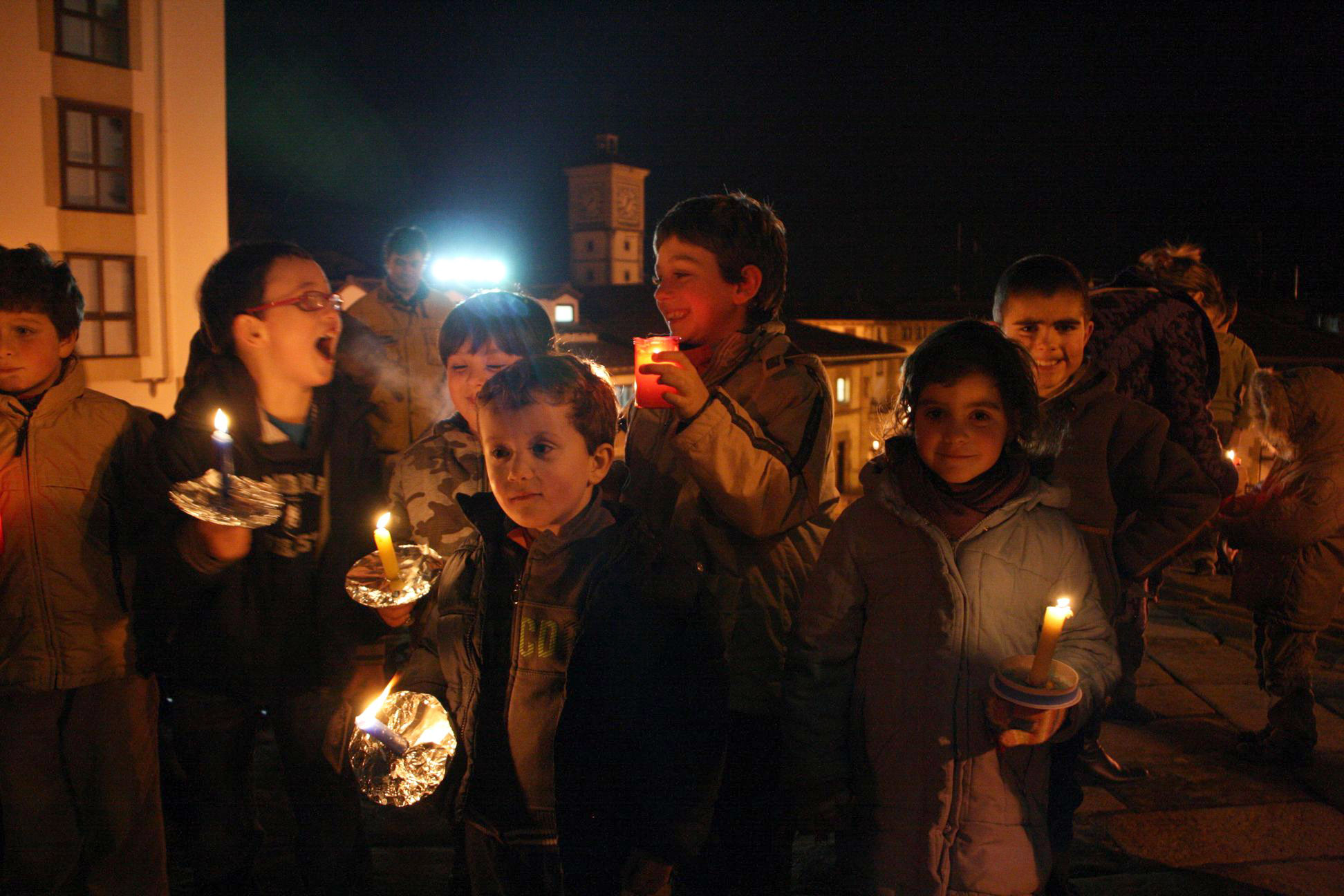Basque ethnography at a glance

Churching. Bilbao, 1967. Rafael Agirre. Labayru Fundazioa Photographic Archive.
Candlemas is the Christian festival held on 2 February to commemorate the Presentation of Jesus at the Temple and the Purification of the Virgin. The Christmas cycle begins on St Nicholas’ Day (6 December) and concludes with the visit of the Magi (6 January). Candlemas marks the start of the carnival season. Celebrations culminate on Shrove Tuesday and Lent follows.
Candle lighting finds its origins in the words pronounced by Simeon when Jesus was presented at the temple, for the old man recognised the child as “a light for revelation to the nations” (Lk 2: 32).
According to a tradition inherited from Mosaic law, a woman remained impure for giving birth. After delivery she stayed at home for a period of forty days and was even restricted from Sunday worship. In case of imperative need to leave the house during postnatal confinement, and taking the part for the whole, the new mother ought to cover her head with a tile from the roof.
As tradition had it, the mother returned to church for purification once recovered from childbirth. Either the midwife or a relative or neighbour would carry the newborn and accompany her to receive a postpartum blessing, a short and simple ritual, conducted in private, known as churching (eleizan sartzea, in several Basque dialects). At the end of the ceremony the lit candle the mother held was handed over to the priest as an offering. The churching of women gradually fell out of practice; the quarantine became shorter and the custom eventually disappeared during the 1960s.
The rite of the blessing of the candles was superimposed on the feast of the Purification of the Virgin, hence the name Candlemas (Candelaria, in Spanish, and Kandelario, in Basque). That is how candle blessing on 2 February established, and so did the blessing of sweets and laces against throat troubles on 3 February, St Blaise’s Day.
The blessed candles were kept in the house for a range of different purposes: they were lit to ward off storms, to guide the sick and dying in their agony, when a family member was away on a trip, at sea in rough waters or in need of protection, when saying the rosary before the portable shrines passed on from house to house, and so on.
Following evening service and candle blessing, it was customary in some localities, as is the case with Gernika-Lumo, for children to walk the streets singing verses like this: Kandelario-lario / hatxari ura dario / sagarrari madari / eutsi Peru adarrari. (Candlemas-mas / from the rock water runs / the apple pears does give / Peru hold the branch of the tree.). The practice vanished for some time but has now been recovered.
On a final note, let us mention a culinary curiosity. Fried bread or custard was in former times a typical dessert both on Candlemas Day and at carnival.
Segundo Oar-Arteta – Etniker Bizkaia – Etniker Euskalerria Groups
Translated by Jaione Bilbao – Language Department – Labayru Fundazioa
Reference for further information: Rites from Birth to Marriage, part of the Ethnographic Atlas of the Basque Country collection.


